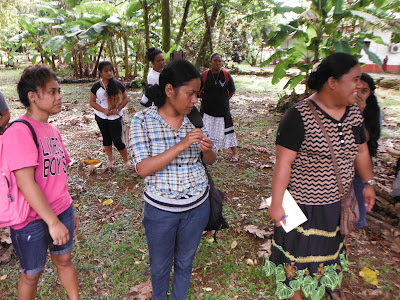Four of the clove trees were cut down, reason unknown, many of the coffee plants have been removed, and three of the nutmeg trees have been removed. I do not know why nor who to ask. Pohnpei Visitor Bureau building appears abandoned and only Island Food is located there. I remain unclear who is now in charge and making decisions, but it appears I probably should try to move more plants to the college if possible. Martha Tilfas, Allison Fugog, Sylvia Johnson Merany Pelep, Allison Fugog, (Janessa Johnny), Trisden Elias. Lorryann Martin visible in the back on the left of Trisden. Eucalyptus deglupta






